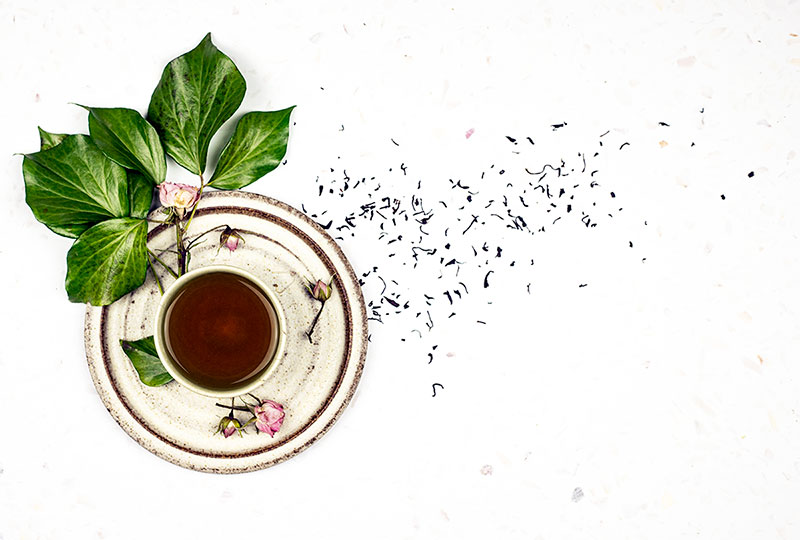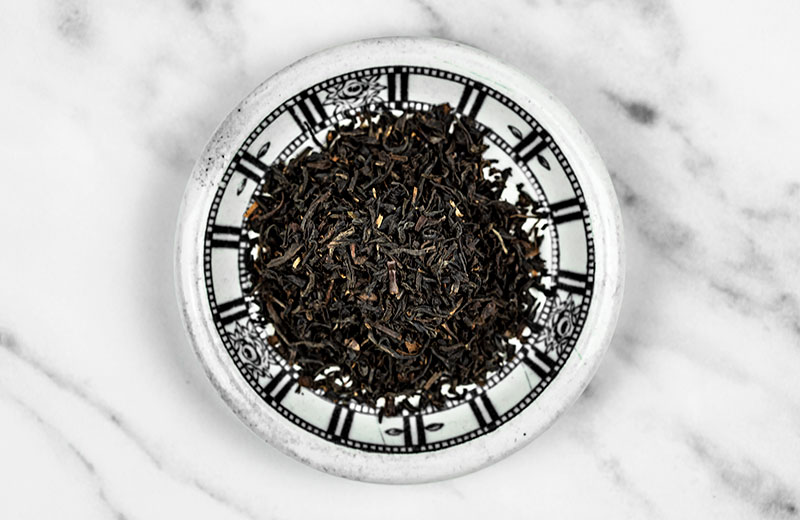What is Keemun tea? + Top Teas to Try
Keemun is one of the best and most popular Chinese black teas. This tea is often included in many traditional tea blends, so there is a chance you have already tried without realising you are drinking this unique tea. Keemun is so special and important that it’s included in the Top 10 famous Chinese teas list, and, it’s the only black tea on the list.
What is Keemun black tea?
Keemun is the English spelling for qimen, a black tea from China with a smooth flavor with fruity and delicate smoky notes and intense orange color. This tea is made from the leaves of Camellia sinensis, just like all other real teas. Leaves are harvested in spring and summer, then withered, rolled, oxidised, fired and sorted.
Unlike Indian Assam tea, Keemun is made from Camellia sinesis var. sinensis, mostly used in China and popular for producing green tea. That’s why Keemun has a different flavor profile, less caffeine than Assam teas and different leaves. Keemun is often added to English breakfast or Russian Caravan blends, to achieve the specific profile and to soften the flavor of Assam tea.

Organic Monks Blend with 4 different black teas including Keemun
When was Keemun tea first created?
The birthplace of Keemun tea is the Qimen County in the Chinese Anhui province. The same province produces other exceptional teas, such as Huangshan Mao Feng, one of the most popular and delicious Chinese green teas, Taiping Houkui, unique green tea with big flat leaves, and the rich and soft Liu’an Gua Pian green tea. In fact, black tea in a rather rare category in the Ahnui tea assortment. It was first produced in 1875 by Yu Quianchen, a failed civil servant that that took over the knowledge of black tea production while traveling to Fujian[1]. Soon after, this tea became one of the most popular teas outside of China too.
What does Keemun taste like?
Keemun tea may have different flavor notes, depending on the type, quality and the way you brew it. Many compare it to the flavor of burgundy wines, and in a way it may offer the same complexity and even fruity notes. Keemun is usually lightly sweet, smooth, a bit malty with a hint of floral note. Some types may have more or less sweetness, a light chocolate note, a bit of citrusy, cinnamon notes or ripe fruit notes. Overall, you can expect mellow tea with less pronounced maltiness and more floral and fruity sweetness than in Assam teas. Color of brewed tea may range from intense orange to amber and red.

Grand Keemun black tea
Types of Keemun tea
There are different types of Keemun black tea. Keemun Mao Feng usually has longer, more wiry leaves, with golden buds. It’s harvested in spring from the same plant used for making green Mao Feng. Keemun gongfu tea is basically any traditionally made, unbroken Keemun tea. The third one, Keemun Haoya is made from buds, and should have an even smoother and sweeter flavor. Those types of tea are best brewed using gong-fu brewing method.
What are the benefits of Keemun tea?
Benefits of Keemun black tea are the same as benefits of other black teas. However, not all black teas are the same, and some will contain higher amounts of beneficial compounds. The final amounts of antioxidants and caffeine always depends on many factors–from growing conditions, to the type of plant, processing methods and brewing style. Interestingly, studies showed that although the highest quality Keemun black tea may have more antioxidants, it doesn’t necessarily provides the highest benefits. In fact, intermediate-high grades may win over competition grade teas in terms of benefits.[2] Thus, if you want to enjoy the best flavor, the higest quality may offer an unforgettable experience, but if you are seeking to gain the best benefits, opt for the intermediate-high grades.
The potential health benefits of Keemun black tea include:
-
Antioxidant activity
While the antioxidants activity in green tea mostly comes from a catechin called EGCg, in black tea it comes from thearubigins and theaflavins. They may help to lower oxidative stress and protect the cells[3].
-
Lowering blood sugar
Research showed that black tea may help to lower blood sugar and improve insulin levels[4].
-
Anticancer activity
Polyphenols in black tea may offer protection against some cancers[5] [6]. The most important compound in black tea is theaflavin. Theaflavin may be mostly responsible for chemo protective activity[7].
-
Protecting the heart and brain
Drinking black tea may help to lower blood pressure and reduce the risk of some heart diseases. Research showed that drinking 3 cups of black tea per day may help with reducing the risk of cardiovascular diseases and reduce cholesterol, while the 4 cups daily may help reduce the risk of stroke[8].
-
Energy boost
Black tea contains caffeine that may provide an energy boost and improve mental performance[9]. Expect around 25 mg of caffeine per 1 gram of dry tea leaf[10]. Remember, not all caffeine will be extracted when steeping the tea leaves. To get the most out of the leaves, re-steep them several times.
How to brew Keemun tea?
To extract the best flavors of the tea, it’s important to brew it correctly. Use an appropriate amount of tea leaves, pay attention to the water temperature and steeping time and use clean pre-heated teaware. Even the very high quality black teas may show bitterness if brewed incorrectly. Spring water is always the best choice for brewing pure tea.
For easy brewing, use about 1 teaspoon of tea leaves per cup of water. Bring water to a boil and let it cool to around 194°F. Steep for 2-3 minutes. Although Keemun is best pure, you can add a bit of milk into your cup of tea if you wish.
If you want to use the eastern brewing technique instead, use a smaller porcelain teapot or a Chinese gaiwan of up to 5oz volume. Most teas produced in China can be brewed using gaiwan. If you love drinking pure unflavored teas, it pays to invest in one as you will be using it often. Preheat the teapot and cups by pouring hot water in and out. Place the tea leaves in the teapot. Leaves should cover the bottom of your teapot. Water temperature should be around 194°F to 203°F. Pour the water over the leaves and strain after a second or two. This infusion should be discarded and is used for washing the leaves. Pour in more water and let it steep for about 1 minute. Make the second infusion longer.
Disclaimer: This article is for informational purposes only. It’s not intended to replace medical advice, diagnosis or treatment. Every person is different and may react to different herbs and teas differently. Never use teas or herbs to treat serious medical conditions on your own. Always seek professional medical advice before choosing home remedies.
References:
[1] https://www.chinadaily.com.cn/m/anhui/travel/2010-04/29/content_9791685_2.htm
[2] https://www.sciencedirect.com/science/article/abs/pii/S0963996919303874
[3] https://www.nature.com/articles/1602489
[4] https://www.ncbi.nlm.nih.gov/pmc/articles/PMC6512146/
[5] https://www.ncbi.nlm.nih.gov/pmc/articles/PMC6512146/
[6] https://www.ncbi.nlm.nih.gov/pubmed/17017850/
[7] https://www.sciencedirect.com/science/article/pii/S2213453013000153
[8] https://www.ncbi.nlm.nih.gov/pmc/articles/PMC6512146/




